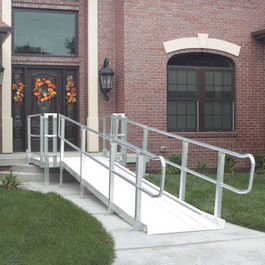Happy
Independent
Safe
There are resources available from certified specialists like Dave Karas to help educate homeowners and to raise awareness and understanding of options for those wishing to age at home.
The more information we are able to share, and the sooner we begin to plan and act, the more poised you will be to increase the quality of your life and the quality of the love ones around you.
- 01
- 02
- 03
- 04
- 05
There's no place like home.
Changes To Consider
Accessibility
Accessibility is the greatest challenge that Aging in Place deals with because it encompasses most of the tasks we regularly perform in all areas of our homes. This list is extensive (and incomplete):
* To have an accessible home we need;
-
Barrier free entries and walkways.
-
Wider halls and doorways to accommodate wheelchairs, etc.
-
Wheelchairs, walkers and canes to enhance mobility.
-
Lever style door knobs for easier operation.
-
Grab bars to facilitate safe movement in certain areas.
-
Lowered counter tops, sinks and work surfaces in the kitchen.
-
Pull out racks in cabinets.
-
Walk-in bathtubs, no-threshold showers,”high rise” toilets and “roll under” lavatories.
-
Single level living.
-
Ramps, lifts and elevators to accommodate multi-level living.
-
Increase door width with “wide swing hinges”























